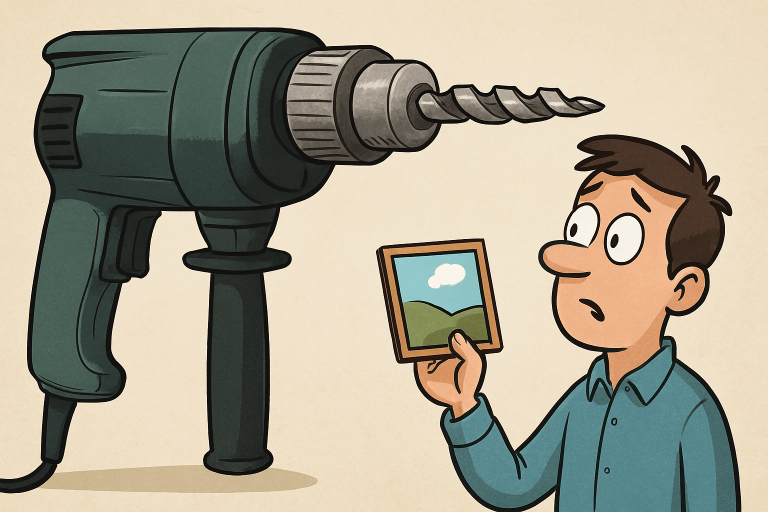Most salespeople chase a single goal: getting the customer to say yes. It’s about closing the deal, getting a signature, securing the order. But what if I told you that the actual sale – the transaction itself – isn’t always the most important part? The key question isn’t always what the customer is buying, but why they’re buying it.
Are you an order-taker or a true advisor?
Imagine a customer walks into a store and asks for the most powerful drill you have. A typical salesperson would smile, point to the top model and say: “This one drills through anything!”
But a great salesperson asks one simple, yet critical question:
“What are you going to use it for?”
It might turn out the customer just wants to hang a lightweight shelf on a drywall. In that case, a hammer drill with 100 Nm torque and an 18V battery is massive overkill – and probably much more expensive than needed.
By understanding why the customer wants a drill, the salesperson might suggest a simpler model – or even a completely different solution, like adhesive hooks.
Or, as Leo McGivena wrote back in 1947:
“Last year, one million quarter-inch drills were sold – not because people wanted quarter-inch drills, but because they wanted quarter-inch holes.”
It’s not about the drill. It’s about the problem it solves.
The goal isn’t to sell the most – but to sell the right thing. Upselling is about adding more. Right-selling is about removing the unnecessary. Sometimes that means offering something simpler, cheaper – or entirely different.
Selling isn’t about pushing a product – it’s about understanding the need
I’ve been in client meetings where the demo created pure hallelujah moments – the customer was genuinely excited. That meeting led to a PoC, a trial period where users tested the solution in their everyday work.
That’s when it really clicked. The feedback was clear: friction disappeared, workflows improved noticeably, and the product exceeded all expectations. They were sold.
But when we moved to finalize the deal, the customer revealed that they were planning to replace parts of their internal infrastructure – and I knew this would affect the user experience.
Even though the product worked perfectly right now, it wouldn’t necessarily fit their future needs due to limited integration options with their upcoming systems.
I couldn’t, in good conscience, recommend that they proceed.
And this wasn’t a small deal – we were talking hundreds of thousands of kroner. Instead, I suggested some competing products that were better suited to the customer’s technical plans. Some of those solutions cost as little as a quarter of ours.
They still chose to buy from me.
Not because my solution was the best – but because they trusted me.
They trusted that I wouldn’t recommend something just to make a sale.
For them, it wasn’t about the product anymore – it was about the relationship.
So when it later turned out I had unfortunately been right – the product didn’t fit them perfectly – the support calls I got were more humble than usual. The customer practically apologized when they reached out:
“We know you warned us, but…”
There was no frustration in those conversations – quite the opposite. There was trust.

But if we don’t ask the follow-up question – why – we risk delivering something completely different than what they truly need.
It’s not about upselling – it’s about relationships
When you ask the why-question, you show that you care about the customer’s real needs. You build trust.
And when customers see that you’re not trying to sell them the most expensive product, but actually giving them the best fit – then you become an advisor, not just a salesperson.
That’s also why many companies hire so-called sales engineers – technical people who support the sales process. These roles often build more trust with the customer than traditional salespeople, simply because technical advisors are perceived as more objective.
But ultimately, both roles have the same goal: to sell. The difference is how they do it.
And do you know what happens when you’re seen as an advisor, not just a seller?
They come back.
Not because you sold them something – but because they trusted you.
So next time a customer asks for a drill, don’t respond with specs.
Instead, ask: “What’s the hole for – or do you even need one?”


